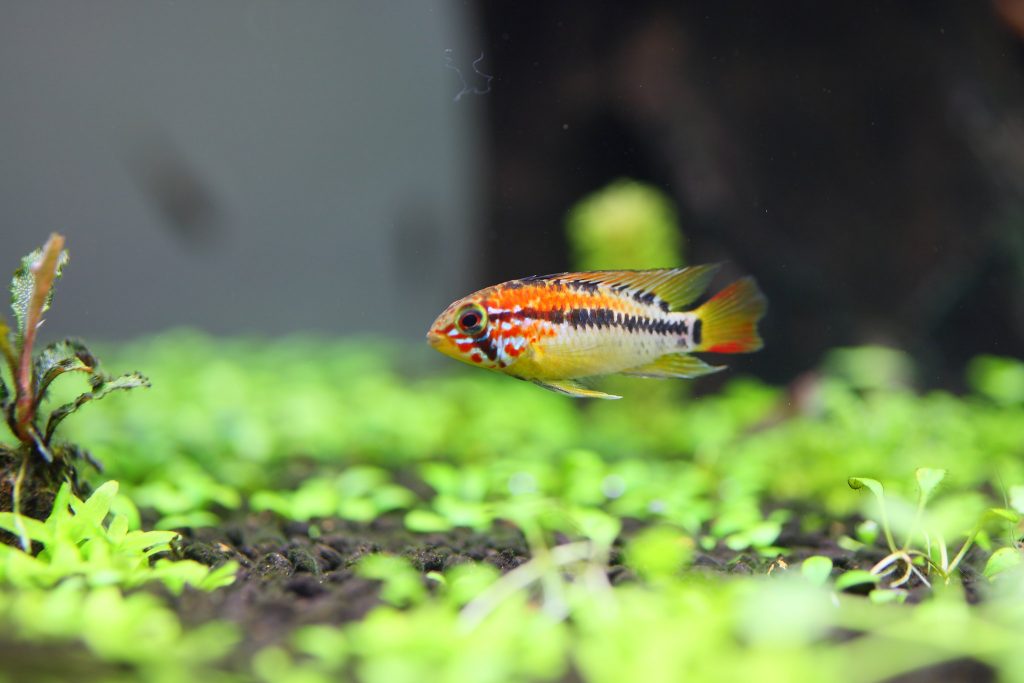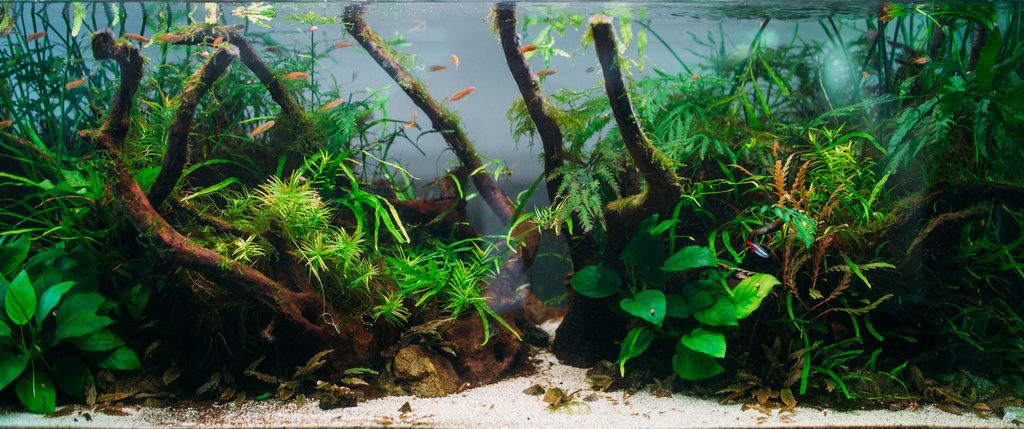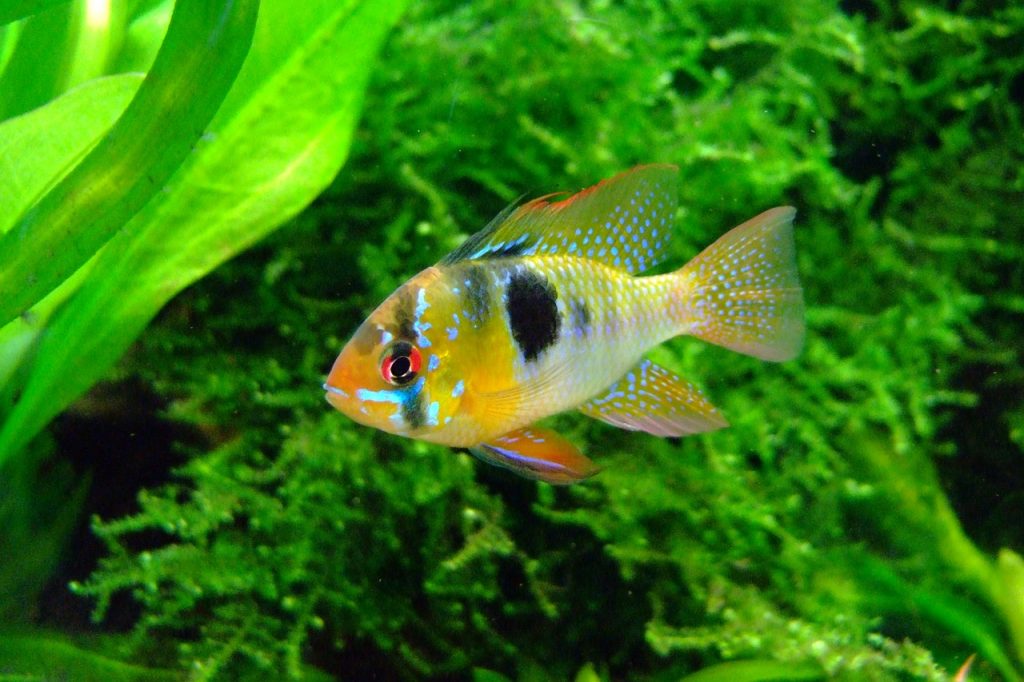The dwarf cichlids of South America are a group of roughly 150 species of small freshwater tropical fish; most of which are kept in the aquarium trade. To be considered a “dwarf” cichlid, adults of the species’ must not grow larger than ten centimeters.

Why dwarf cichlids?
South America’s dwarf cichlids are visually stunning aquarium specimens. Many of the species in the group—including the wildly popular Mikrogeophagus ramirezi and Apistogramma cacatuoides—are known for their delicate ornamental fins and dazzling mix of colours.
Dwarf cichlids don’t try to get by on looks alone! They’re also renowned for their fascinating behaviours and personality. Many species in the group will form strong pair bonds with their breeding partner. If breeding is successful, the fry stay with their parents (who protect them as a team) until they’re large enough to look after themselves.
Establishing a suitable aquarium
Most South American dwarf cichlids are peaceful fish that can be kept in a community aquarium with other similarly sized fish non-aggressive fish. Usually only male should be kept in each aquarium and—depending on the specific species—he should share the tank with one or several females.

A 75 litre planted aquarium is ideal. The tank should have a sandy substrate, dense clumps of plants, good hiding places, and some open swimming areas. Dwarf cichlids are timid fish that prefer to stay secluded in a lower part of the aquarium. They work well with tank mates that prefer sticking to the top of the aquarium.
Dwarf cichlids demand extremely high water quality, so frequent water changes are a must. They prefer slightly acidic water with a pH between 5 and 7. Most of the commonly kept South American dwarf cichlids require a water temperature of around 25 degrees Celsius, however there’s several species from the southern parts of South America that prefer cooler water.
Diet & Feeding of Dwarf Cichlids
Dwarf cichlids enjoy a varied omnivorous diet that can be usually be satisfied with commercially-bought flakes and pellets. High-quality tropical fish flakes, sinking small cichlid pellets, and an occasional treat of live food will satisfy their dietary requirements.
Some members of the group sift through fine sand as part of their eating process. Mouth and gill problems have been observed in some fish when they’re denied access to sand.

Closing thoughts
Beautiful though they may be, many (perhaps even most) of the dwarf cichlid species require a level of care that beginner aquarists may be unable to provide. It’s better to start yourself off with hardier (and less expensive) tropical aquarium fish to hone your skills before moving on to the more delicate species discussed in this article.
